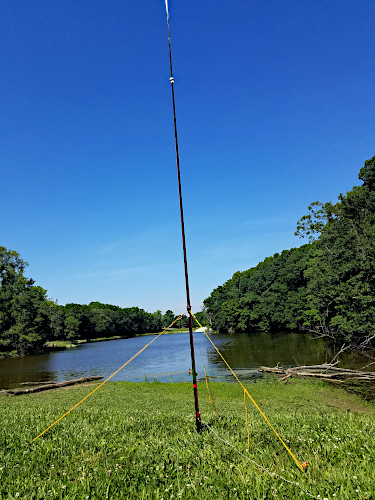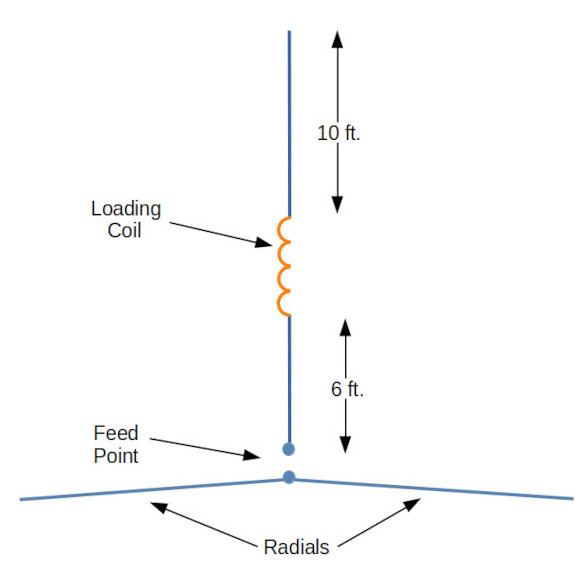 There is something exciting doing a POTA activation where you hike in with all your gear in a pack and activating a park running QRP power. Since my original post about my first QCX-mini QRP transceiver, I now have additional QCX-mini’s that allow me to work my POTA QRP activations on 40, 30, and 20 meters. This meant I needed to build a portable shortened vertical for these bands. This particular vertical antenna build is based on my original Shortened 40 Meter Vertical but with the addition of being able to short the loading coil at the proper tap point for resonance on the 30 and 20 meter bands.
There is something exciting doing a POTA activation where you hike in with all your gear in a pack and activating a park running QRP power. Since my original post about my first QCX-mini QRP transceiver, I now have additional QCX-mini’s that allow me to work my POTA QRP activations on 40, 30, and 20 meters. This meant I needed to build a portable shortened vertical for these bands. This particular vertical antenna build is based on my original Shortened 40 Meter Vertical but with the addition of being able to short the loading coil at the proper tap point for resonance on the 30 and 20 meter bands.
One problem I had with the original 40 meter vertical antenna, was that I used two 1/4 wave radials, which conventional wisdom says you should use with vertical antennas. On 40 meters, they are approximately 33 feet long. Which makes it more difficult to deploy the radials when in a heavily wooded POTA activation.
1/8 Wave Radials?
In doing some internet searches I discovered that it is possible to use radials that are 1/8 wavelength long — Yeah it sounds crazy to me too, but if its true, then it would greatly help the radial deployment issue on 40 meters. Granted at reduced efficiency, but I figured it was worth a shot. More on this later.
Since I already had a 20 foot collapsible fishing pole for my 40 meter shortened vertical, that is what I used for this multiband antenna. Since this was going to be for 3 bands, I wanted the loading coil low enough so that I could easily make a band change without lowering the vertical. Again, I went over to the coil shortened vertical antenna calculator page which gave me my starting points for the loading coil. Tuning this antenna for all 3 bands seemed trickier than normal. My guess is that I am using only two 1/8 wave radials.
The diagram below are my final dimensions. Your mileage may vary, but this is what I ended up with.

For the loading coil form I decided to use an In Sink Tailpiece. My reasoning is this, typically people use standard PVC pipe for the coil form, which is fine, but the wall thickness of the pipe seems unnecessarily thick for my application. My main concern here was to put less stress on the wire that is the vertical part of the antenna. A toilet overflow tube is much thinner and lighter and works just fine. The outside diameter of my overflow tube is 1.5 inches. I am assuming that is a typical outside diameter. I cut the Sink Tailpiece 3 1/2 inches long, but 2 1/2″ would have worked just fine.
I used the coil shortened vertical antenna calculator based on where the coil is to be located in the above diagram and came up with a total number of turns of 33 with a tap at 13 turns from the top of the coil. If you have a different gage wire, put that in the coil shortened vertical antenna calculator instead.
Initially I built the loading coil with the calculated number of turns. As it turned out, I needed more inductance. In the photo on the next page you can see at the top of the last turn I added more wire. Lesson learned, wind more wire on to the coil than calculated.